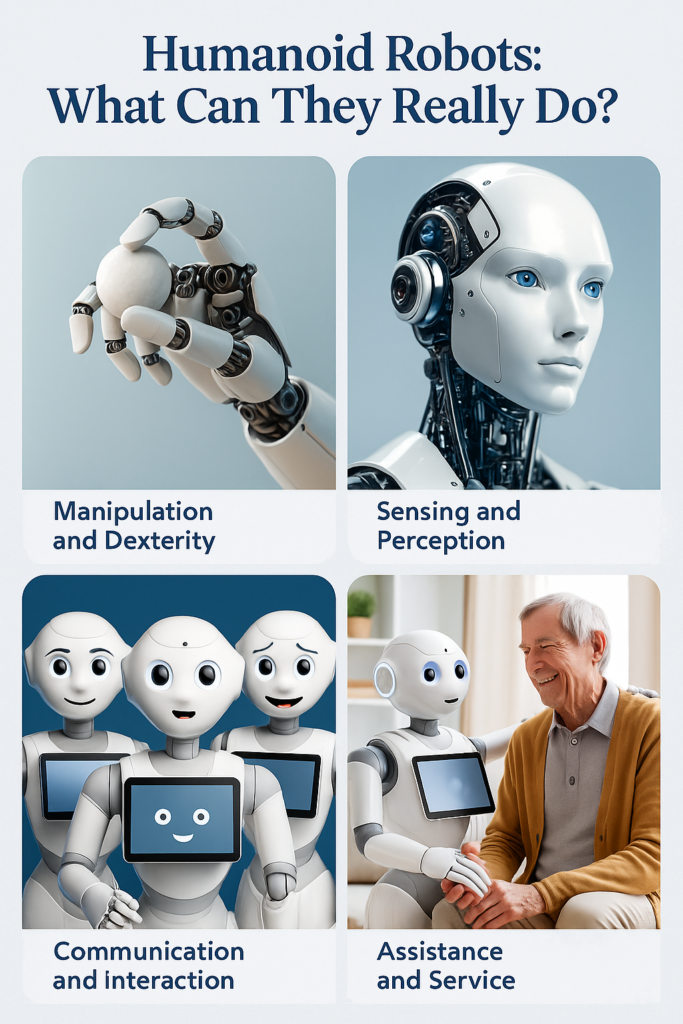Humanoid robots are designed to look and move like humans, but what makes them truly fascinating is their growing list of capabilities. From walking and talking to learning and assisting, these machines are steadily becoming more versatile and useful in many areas of life.
Key Capabilities of Humanoid Robots
Mobility and Balance
Humanoid robots can walk, run, climb stairs, and even jump. Advanced models like Boston Dynamics’ Atlas demonstrate incredible agility and balance, enabling robots to navigate uneven terrain and recover from falls.
Manipulation and Dexterity
Equipped with sophisticated hands and fingers, humanoid robots can grasp, hold, and manipulate objects with precision. Robots like the Dex5 hand mimic human dexterity, allowing them to perform delicate tasks like picking up small items or using tools.
Sensing and Perception
Using cameras, microphones, touch sensors, and more, humanoid robots perceive their environment. They recognize faces, detect obstacles, listen to commands, and even interpret emotions through facial expression analysis.
Communication and Interaction
Advanced AI enables humanoid robots to hold conversations, understand speech, and respond naturally. Social robots like Pepper are designed to engage with people, making them useful in customer service, healthcare, and education.
Learning and Adaptation
Through machine learning, humanoid robots can improve their skills over time. They learn from experience, adapt to new tasks, and even develop problem-solving abilities, making them more autonomous.
Assistance and Service
Humanoids are increasingly used to assist humans—helping elderly or disabled individuals, performing repetitive industrial tasks, or guiding visitors in public spaces.
The capabilities of humanoid robots are rapidly expanding, blending mechanical skill with intelligent interaction. As they become more adept, these robots promise to transform how we work, learn, and live—offering new levels of support and companionship.

